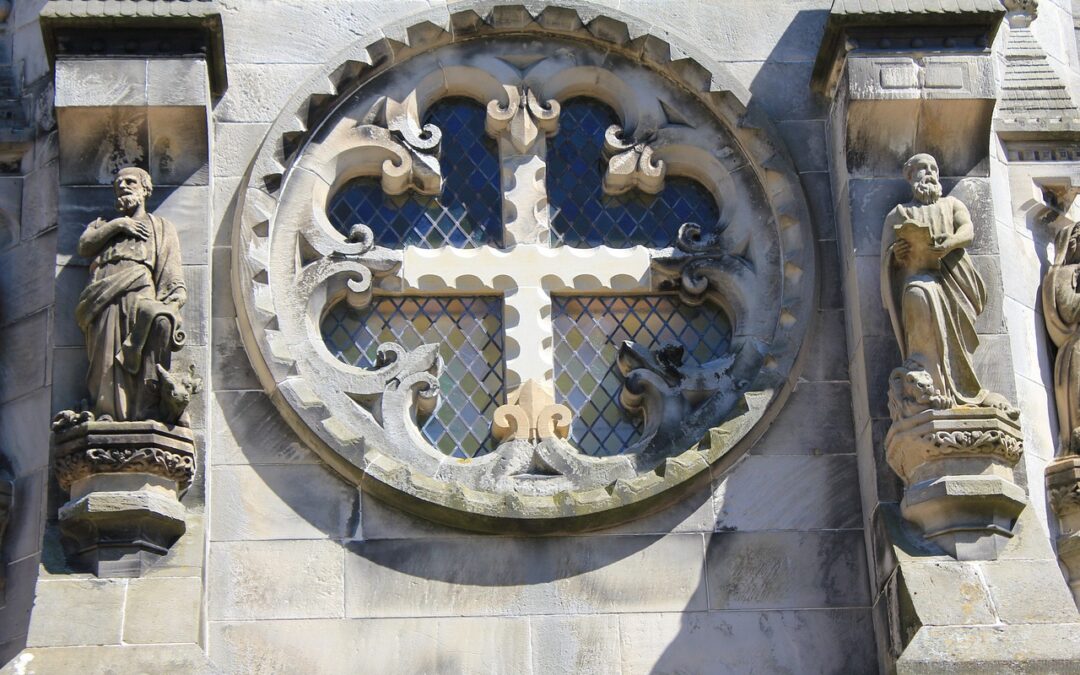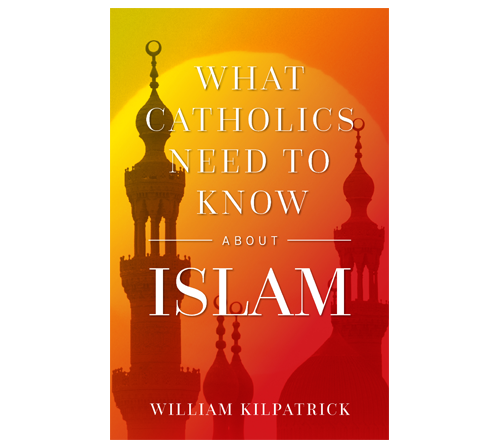But it got some things right.
The attack on Salman Rushdie reminds us once again of the difference between Islam and other religions. In response to the publication of The Satanic Verses, the Ayatollah Khomeini issued a death fatwa in 1989 against Rushdie which resulted in attacks on two translators, one publisher, and a massacre at a hotel in Turkey.
Thirty years after the issuance of the fatwa, the Ayatollah Ali Khamenei made it clear that the fatwa was still in effect; and two weeks ago, a Muslim man heeded the call and attacked Rushdie as he was about to deliver a talk at an event in Chautauqua, New York. Rushdie was stabbed 15 times and severely wounded.
But wouldn’t Christians react in a similar way if Christ had been blasphemed in the same way that Muhammad was blasphemed in The Satanic Verses? Well, that might have been the case 400 years ago during the wars of religion in Europe, but not today.
How do we know? We know because 15 years after the publication of The Satanic Verses, a book appeared which not only blasphemed Christ, but also launched an all-out assault on the Catholic Church. Dan Brown’s runaway best seller, The Da Vinci Code claimed that modern day Christianity is built on systemic lies intended to cover-up the true meaning of Christ’s life.
Many churchmen did criticize the book, but no Christian leader called for Dan Brown’s death—not the Pope, nor the Archbishop of Canterbury, nor any Orthodox patriarch, nor the head of the Southern Baptist Convention.
Yet because The Da Vinci Code purported to be based on actual historical documents, it did do a lot of damage to the credibility of Christianity. For example, a poll of Canadians who had read the novel revealed that a third of them believed the book gave a true account of the Christian story. Another poll found that two thirds of Britons who read the book believed that Jesus fathered a child with Mary Magdalene.
Because it was so widely read (far more than The Satanic Verses which is largely unreadable), and because it claimed to be based on fact, The Da Vinci Code served to shake the faith of many Christians. Moreover, the book’s influence was magnified by a number of coincidences. The book’s publication roughly coincided with the appearance of numerous and much-publicized books making the case for atheism (e.g., Hitchens, Harris, Dawkins, Dennett). What’s more, Brown’s thesis that Christianity was originally intended to be a goddess-worshipping religion dovetailed with what numerous feminists of the time believed.
To top it all off, Brown’s claim that the Catholic Church had suppressed the truth about the origins of Christianity hit the bookstores less than a year after the scandal of the Church’s cover-up of priestly sex abuse hit the headlines.
It was good timing as far as book sales were concerned, but bad timing for the Catholic Church which was already reeling from the sex-abuse scandals.
In a sense it was also good timing from an Islamic perspective. To some extent, The Da Vinci Code took the heat off of Islam, and applied the heat instead to the Catholic Church. As I wrote six years ago:
“Looked at in perspective, the enormous popularity of The Da Vinci Code (both the book and the movie) presents us with a massive irony. Just at that moment when a truly misogynistic religion was spreading rapidly all over the globe, the opinion-makers decided to focus their ire on the Faith that had markedly elevated the status of women. And just when Islam’s historical penchant for silencing dissenters was once again on display, the trendsetters decided to vent their spleen on an institution that for decades had given a respectful hearing to the dissenters in its midst.”
It was a classic case of transference—the psychological phenomenon by which one transfers emotions and fears related to an important figure in one’s life to another person on whom one can more safely vent one’s feelings.
The Da Vinci Code came out two years after the destruction of the World Trade Center; yet it portrays the Catholic Church as the world’s most dangerous religion and the greatest threat to human happiness. And judging by the numerous defections from the Church in those years, many seemed to believe the charge.
By the time the film version of Da Vinci came out in 2006, it should have been crystal clear which of the world’s religion was the most ominous and threatening. In 2004, Islamic terrorists killed 193 and injured over 2,000 in coordinated attacks on Madrid’s commuter rail system. In the same year, Islamic terrorists laid siege to a school in Beslan, Russia leaving 333 dead (including 186 children) and 783 injured. In 2005, three weeks of Muslim rioting in 275 French cities resulted in 3 civilian deaths and 126 injured police and firemen. And on July 7th of 2005, coordinated attacks by Islamic terrorists on London’s transportation system, left 56 dead and 784 injured.
So, it’s ironic that the hit film of 2006 should be the story of a handful of Catholic conspirators ready to kill anyone who might reveal the closely kept secret that Jesus had married Mary Magdalene and had fathered a child by her.
It would be foolish, of course, to argue that The Da Vinci Code all by itself had managed to throw the world off the scent of Islamic-inspired violence. By 2006, the media had already grown accustomed to assuring the world that no matter how often Islamist groups claimed responsibility for attacks, “violence has nothing to do with Islam.” Ever since 9/11, the media has been covering-up for Islam as effectively as The Da Vinci Code’s Catholic cabal covered-up the “real truth” about Christianity.
But, as a number of scholarly books have since shown, the traditional story of Christianity is substantiated by a considerable amount of historical and archaeological evidence. On the other hand, the made-up history in The Da Vinci Code is about as reliable as a politically-inspired FBI search warrant.
Having said that, however, I must admit that Dan Brown’s criticism of the Catholic Church was correct in several ways—although not in the ways he intended. It now appears that during The Da Vinci Code controversy, an actual conspiracy was well-underway within the Catholic Church. Moreover, as in The Da Vinci Code, the conspiracy was led by powerful prelates who hoped to suppress the real meaning of Christianity.
Only, Dan Brown got everything backwards. His conspirators were tradition-bound dogmatists who wanted to conceal the biggest human-interest story of all time—namely, that Christianity had been founded by a couple of proto-feminist Jews named Jesus and Mary who thought that people ought to lighten-up a bit by ditching patriarchal religion and replacing it with life-giving goddess worship.
That version of things was, of course, merely a figment of Brown’s imagination. As it turns out, the real-life conspiracy was and is the work not of rigid traditionalists, but of leftist and liberal Catholic prelates. Moreover, these prelates were completely on-board with the feminist revolution and the sexual revolution—although their personal tastes ran not to nubile women, but to rent boys and seminarians.
Within this larger group of liberal-minded prelates, there existed a smaller group of high-ranking bishops and cardinals known as the “St. Gallen Mafia.” They met regularly in St. Gallen Switzerland to discuss reforming the Church and also to plan how to put a man of their own choosing on the papal throne.
The Saint Gallen group failed to prevent the election of Pope Benedict XVI in 2005, but when he retired in 2013, they managed (or so it is alleged) to replace him with Jorge Bergoglio, the Archbishop of Buenos Aires.
Upon ascending the throne of Peter, Bergoglio/Francis immediately set about restructuring the Church in ways that Dan Brown would appreciate. He lambasted traditional Catholics for their “rigidity”, demoted conservative bishops, and packed the College of Cardinals with liberal prelates.
Brown would also appreciate the gradual theological shifts that Francis set in motion. The Da Vinci Code depicts Jesus as only a mortal (though a highly enlightened one) whose humanistic message was transformed after his death into a patriarchal religious system. Francis hasn’t gone so far as to officially deny the divinity of Jesus, but it’s now clear that the main thrust of his papacy is to convert Christianity into a humanistic religion focused on secular goals such as protecting the environment and promoting human fraternity. If the Church continues on this trajectory, the liberal prelates may eventually succeed in covering-up the original Christian story, i.e., the New Testament story about the birth, death, and resurrection of the Son of God.
Whether or not Francis has actually read The Da Vinci Code, he seems to be influenced by some of the same ideas that inspired Brown. Among other things, an interest in the divine feminine has emerged in the Church during the Francis papacy. For example, whenever Francis talks about environmental pollution, he almost always talks about the cries of “Mother Earth.”
At first this seemed nothing more than metaphorical language, but then came the “Pachamama” ritual in the Vatican Garden in which Francis took part. Since then, wooden statuettes of Pachamama—a fertility goddess revered by some Amazonian tribes—keep popping up in Catholic services. Whether this amounts to Catholic goddess worship is hard to say, because, as per usual, Francis has made no attempt to clarify the confusion.
According to The Da Vinci Code, the Emperor Constantine converted the world from matriarchal paganism to patriarchal Christianity. Is Francis attempting to reverse the process? Once again, it’s difficult to say. Does Francis really believe in goddesses? Or is his goddess-talk simply a pragmatic way of furthering his goal of a one-world syncretic religion that would include bits and pieces of Christianity, Judaism, Islam, paganism, and so forth, with all of it embedded in a core of humanism? One wonders if the Church shouldn’t appropriate an ad slogan used by the Unitarian Church a few decades ago: “Come as you are; we don’t want to change you.”
The woke element in the Church doesn’t want to change you, but it’s willing to twist the faith into a pretzel in order to accommodate the changing times.
The assassination attempt on Salman Rushdie reminds us of the dangers of unquestioned dogmatism, but the rapid and radical changes in the Catholic Church under Francis should also alarm us. When progressivism ends up in paganism, something has obviously gone wrong. The problem is that many Catholics in positions of power have lost their bearings. One wonders if they believe in anything anymore. They float on a sea of relativism in which masculine and feminine are interchangeable and in which Pachamama and God the Father seem to be on equal footing. This faddishness is worrisome for several reasons. But one of the chief reasons for concern is that the West can no longer count on the Catholic Church to act as a spiritual bulwark against the advance of Islam.
Islam? That’s the patriarchal and misogynist religion which should have been the target of Dan Brown’s novel had he been genuinely interested in the preservation of the feminine.
This article originally appeared in the August 26, 2022 edition of FrontPage.
Pictured above: Rosslyn Chapel, Scotland. Supposed site of Mary Magdalene’s tomb according to The Da Vinci Code.
Photo credit: Pixabay


